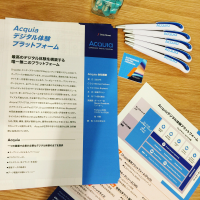
Acquia.com: Building a Global Website

The Business Case for Building a Global Website
In today’s globalized economy, the ability to access new markets is essential for any enterprise business seeking to drive growth through connecting with new audiences across regions.
One important pathway to achieving this goal is through building a global website that provides users with rich content and information that is relevant to their region in localized languages. Each organization must decide individually when and how to scale their digital presence relevant to their growth cycle. Yet, there is a strong market case for a sooner-is-better approach to building a global, multilingual site: the ability to expand and strengthen brand recognition in foreign markets will result both in increased revenue and a competitive advantage in developed as well as growing economies.
While Acquia is in the infancy stage of building a global website, our experience is a case study for how the migration to Drupal 8 can help facilitate a global digital transformation.
The Planning Phase
As with any great idea or project, securing a budget can be a complex process, and making the market case for transforming a site to translate what may be a myriad of web pages in several languages may seem idealistic and impractical from a business standpoint — yet, there is a sound basis for it.
Adrianna Shukla, a senior marketing web operations manager at Acquia who is also the lead manager of our website, notes, “When you are trying to secure the budget with executives, it is important to make the point that a well-managed internet presence, which is in sync with the markets that the company serves, will definitely help increase global market share. When people see that your company is invested in their region or that they have teams in the region and documentation on products that are localized for them, they have more trust in your company.”
When customers believe you are focused on their specific needs, they are very often more willing to sign on with a company that has the ability to personalize and provide product-related information in their local language. Further, a global website yields more accurate data on what users are searching for and their buying patterns, and, ultimately, helps enhance loyalty to the brand.
A Global Partnership
Shukla further explains that while working in Drupal 7, the translation process was cumbersome, manually intensive, and time consuming. Building multilingual sites is now faster and easier than ever. Four core modules in Drupal 8 allow full translation of every part of a site. Once the site was migrated to Drupal 8, Acquia’s team decided to partner with an external translation provider, Lingotek, which supports Drupal 7 and Drupal 8, and, combined with Acquia Lift, the process became seamless.
“We used Acquia Lift to personalize not only the language yet also the experience users have. As not every blog piece is relevant to every region, we translated the content first and then used Acquia Lift to personalize the content the users see at all times,” noted Shukla.
The partnership with Lingotek allows for a unified location so all translations can be governed and tracked through each translation stage: from assigning to translators based globally to publishing in each region. This process also ensures there is consistency in the posts customers receive across all regional sites, e.g., users in Germany will see the same content as users based in Japan.
Word-for-word: Practical Realities and Cultural Considerations
As our team began to expand our translation program, we initially envisioned pricing our new country addition, Japan, in line with other countries we were translating our materials for, such as Germany and France. However, we quickly learned that the logistical effort required for building a global website in one language may not necessarily apply to another.
In Japan, we made the decision to partner with a local agency whose developers speak Japanese fluently and are able to develop in Drupal to create the layout and design of the translations on each page to best communicate our copy. As the modern Japanese writing system includes symbols without spacing, in contrast to Romance languages, which use the Roman alphabet, the developers provide ongoing technical development to address common issues such as line breaks, as the browser does not always intuitively break the line at the correct point in the sentence.
Ultimately, what we are learning is a successful program can be most achieved by partnering with local developers and translators based in the respective region to which you are seeking to publish content. It is definitely an important consideration to ensure copy is formatted according to the style and structure of the language as well as culturally relevant to the audience. Translators should be cognizant of nuances, idiomatic phrases, and colloquialisms in the spoken and written language of a country or region. Countries may share a language, yet may use it slightly differently.
As we expand our program to eventually publish in Japanese, Spanish and Portuguese, these considerations will be top of mind.
The Final Take
When thinking about translations projects in new regions, communicating your brand’s message consistently and clearly should be the highest priority, and understanding how best to communicate this message in different languages and regions is key to any successful translation program.
